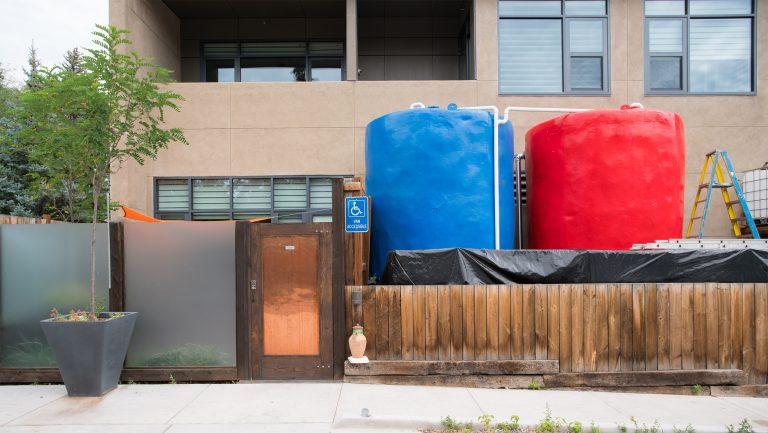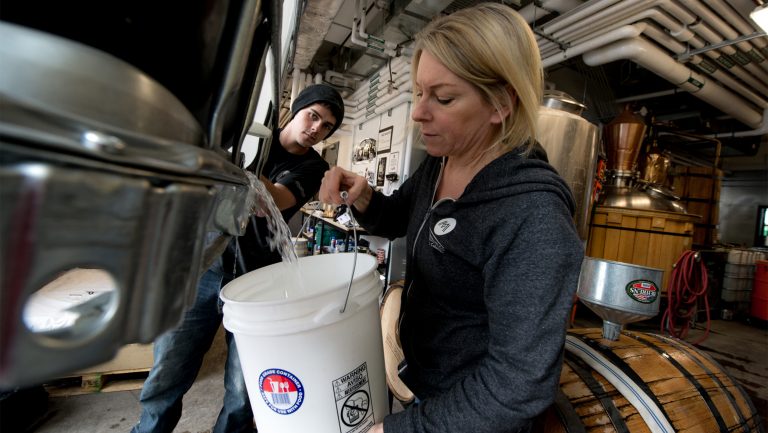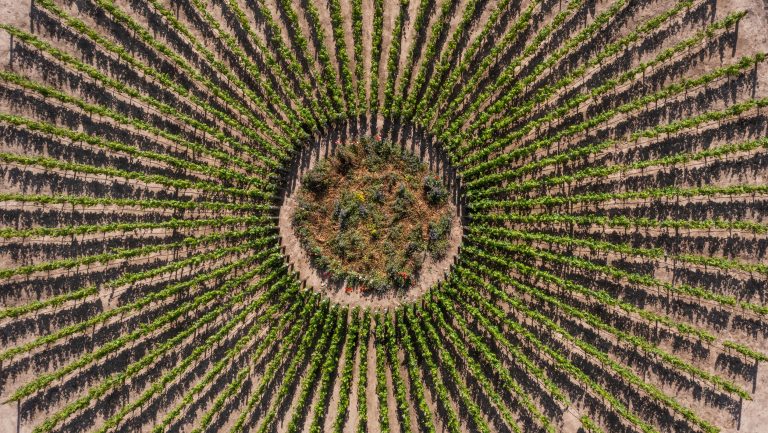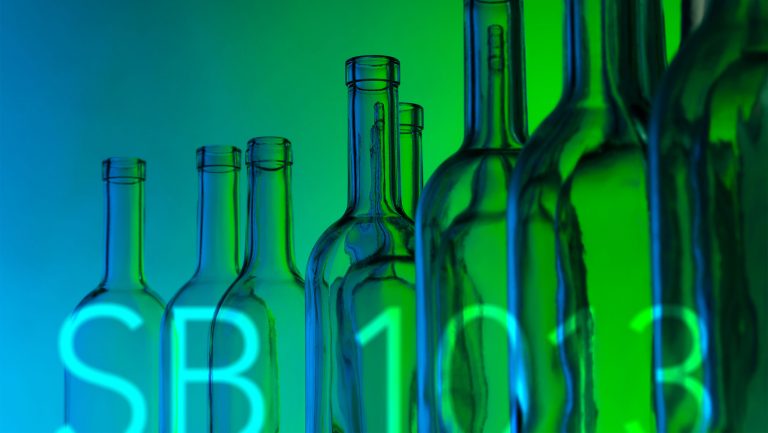Water sustainability was not top of mind for Al Laws when he was starting Laws Whiskey House in Denver. That quickly changed after he watched a constant stream of cold tap water run over his still’s condenser and then flow straight down the drain.
“I thought, ‘This has got to stop,’” Laws says. “We need to have investment so we don’t do that anymore. We want to track every gallon from its input to its output.”
Water is the key to distilling—and distilling traditionally uses a lot of water for fermentation, proofing, and especially cooling. The group of alcohol industry leaders in the Beverage Industry Environmental Roundtable (BIER) found that, on average, distilleries use about 37 liters of water to produce one liter of spirit—around 10 times the amounts used for beer (3.5 liters of water) and wine (four liters of water).

Don’t miss the latest drinks industry news and insights. Sign up for our award-winning newsletters and get insider intel, resources, and trends delivered to your inbox every week.
Diverting the water used to cool a still’s condenser into a closed-loop system is the first way that Laws moved toward water sustainability. He’s far from alone. Cooling is the biggest water use culprit in distilling, though it’s also one area with an established fix—closed-loop systems that recycle and re-cool the water instead of draining it can be found around the world. That same BIER report outlined that this can bring water use down to about 11 liters of water for every liter of liquor produced.
That’s a sizable amount of water, especially in the dry West where climate change is exacerbating a severe drought. Reservoirs are running low, annual rainfall is lower on average, and extended hot conditions dry up the moisture that does fall.
This impacts every facet of life, including distilling. Today, distillers across the country are rethinking their approach to water management, from how much water goes in, to the quality of the wastewater coming out.
A Dry California Looks for Solutions
“The big question with water is who gets what, and if you have a big population in one location, does that mean they can take water from other locations, which is what we’re doing now,” says Ryan Friesen, the head distiller at Blinking Owl Distillery in Santa Ana, California, and the vice president of the California Artisanal Distillers Guild. “Is it sustainable? Not as long as California stays in a 100-year drought for more than 10 years in a row. So we have to get better at controlling the water we do use.”
Blinking Owl is in a rare position in California. Orange County, where the distillery is located, has one of the largest groundwater reclamation systems in the world. This allows Blinking Owl to rely on its local municipal system to provide a sustainable option. Friesen notes that water conservation is a problem that’ll require both municipal and industry solutions. On the distillery side, Blinking Owl uses a 10,000-gallon closed-loop cooling system.
“There’s always a cost though, and the cost for us is the electricity to do the cooling,” says Friesen. “But at least the electricity you can get from sustainable resources when available.”
Another small way that California distillers are bringing alternative sources of clean water into the bottle is through proofing. Hangar One in Alameda, Calif., uses fog catchers to turn the Bay area’s famous fog into fresh water, which the company describes as “an articulation of our commitment to preserving the fragile ecology of our home state.” Rod & Hammer’s SLO Stills in San Luis Obispo uses desalinated Pacific Ocean water sourced from a plant in nearby Santa Barbara. These are small inputs from a big picture perspective, but also serve to bring awareness to the role that the stressed resource has in drinks.
Still, even in a state where water shortages are so highly publicized, water conservation and treatment isn’t always the number one priority.
“New technology is expensive, and most start up distilleries don’t have money to burn,” says Friesen. Yet with the current progression of water scarcity, he adds, distilleries will be forced to adopt new technologies.
“I think we’re going to get to a point where you don’t open a distillery in a location because of the water issues there, or because of the waste stream,” says Friesen. “I think that has to become part of the everyday conversation.”

Water Conservation at the Source
A wide swath of the Southwest relies on snowmelt from mountains in Colorado, but sources are strained. The overstretched Colorado River, for example, feeds the Glen Canyon Dam hydroelectric facility on Lake Powell, which provides a portion of the power to about five million people in six states. The Bureau of Reclamation gives a 34 percent chance that the water level will fall below the necessary 3,490 feet to run the dam by 2026.
Lake Mead, also fed by the Colorado River, provides water for at least 40 million people throughout seven states and Mexico. It dropped to just 35 percent capacity in 2021, prompting deep water supply cuts in Nevada, Arizona, and Mexico.
“In Colorado, and all the West, water is our most precious resource,” says Connie Baker, the cofounder, CEO, and head distiller at Marble Distilling in Carbondale, Colorado.
“The water crisis will only get worse, and unless all act now, at any level, climate change will only accelerate.” – Connie Baker, Marble Distilling
Marble Distilling partnered with Siemens and the controls contractor Holbrook Services for its groundbreaking Water Energy Thermal System (WETS) that repurposes and recycles water for both the distillery and its attached hotel, The Distillery Inn. The hot water from the distilling process is pumped to other parts of the building for things like domestic hot water and heating, which leaves cool water that’s used to cool the mash and the condenser. Excess heat is used for snowmelt in the winter, while excess cold water is used for temperature control in the distillery and the on-site guest suites.
This continuous closed-loop process is sustainable from both a water and energy perspective. Marble Distilling saves more than four million gallons of water a year with WETS while also capturing 1.8 billion BTUs of energy—enough to power 20 homes.
Partnerships Turn Wastewater Into a Resource
Distillery wastewater, called stillage, has a low pH, high salinity, and a high concentration of nitrogen, phosphorus, and other organic materials. When dumped in rivers and streams, it can inhibit photosynthesis and reduce the oxygen in water, which kills aquatic plants and animals. A study by researchers in Poland notes that some countries allow distilleries to thicken wastewater and spread it over fields like a fertilizer, but the nitrogen content is so high that it can end up being a soil pollutant.
For this reason, most distillers pay to have it dumped or shipped off to be disposed of elsewhere. Some, however, are experimenting with ways to turn wastewater into a resource.
Five & 20 in Westfield, New York, partnered with TimberFish Technologies to use wastewater for a fishery. Rather than paying to dispose of stillage, Five & 20 uses it as part of a sustainable side business that creates its own income. The nitrogen- and phosphorus-rich wastewater is pumped to tanks to feed microbes. The microbes clean the water and serve as food for small invertebrates, which in turn are eaten by fish. The pilot system at Five & 20 has grown rainbow trout, channel catfish, yellow perch, largemouth bass, and freshwater shrimp.

It’s not the only distillery at the forefront of testing new systems outside of the liquor industry for wastewater treatment.
Laws Whiskey House partnered with South Platte Renew in a pilot water cleaning program that uses microbes to metabolize carbon and turn nitrate to nitrogen gas. Laws Whiskey House provides the carbon-rich stillage for the program, which, when scaled up, could reduce the water treatment center’s chemical dependency and provide a way for other businesses to reduce their carbon footprint.
“We looked at [the stillage] and thought there’s so much here, we can’t just throw it out,” says Laws.
Part of the problem is that there’s not yet a clear and obvious way of handling wastewater for cash-strapped, small distilleries. According to Laws, the company has spent hundreds of thousands of dollars to separate its waste streams and divert them to where they can be made useful.
“Most distillers are pretty small and don’t have the technical expertise, nor do they want to spend dollars on it,” Laws says. “They say, ‘Oh just separate the solids and put the liquids down the drain and pay your fees.’”
Yet by looking at ways to both reduce the amount of water that’s used and to repurpose water that’s typically dumped, distillers are staying at the forefront of water management.
“The water crisis will only get worse, and unless all act now, at any level, climate change will only accelerate,” says Baker, of Marble Distilling. “None of us want to stop doing what we love, but we will have to adjust how we do it.”

Dispatch
Sign up for our award-winning newsletter
Don’t miss the latest drinks industry news and insights—delivered to your inbox every week.
Nickolaus Hines is a journalist who writes about beer, spirits, food, and travel. He’s the food and drinks editor at Matador Network and has written about drinks for Liquor.com, Men’s Health, October, Hop Culture, Supercall, and VinePair.







